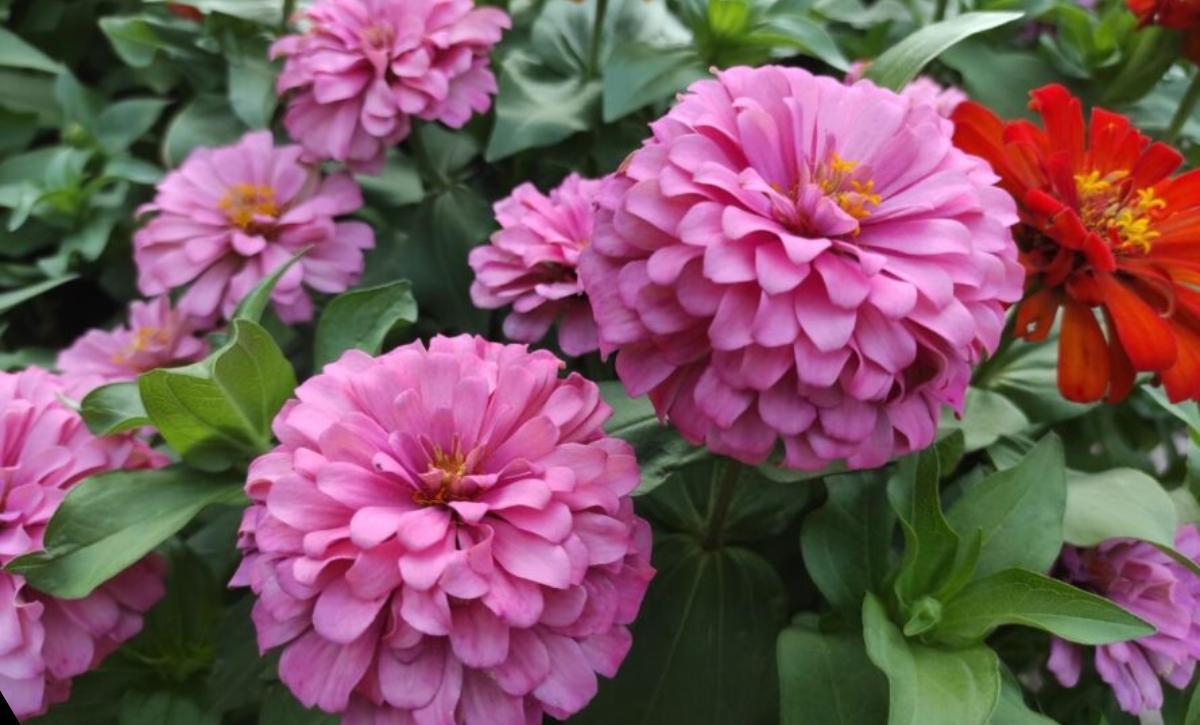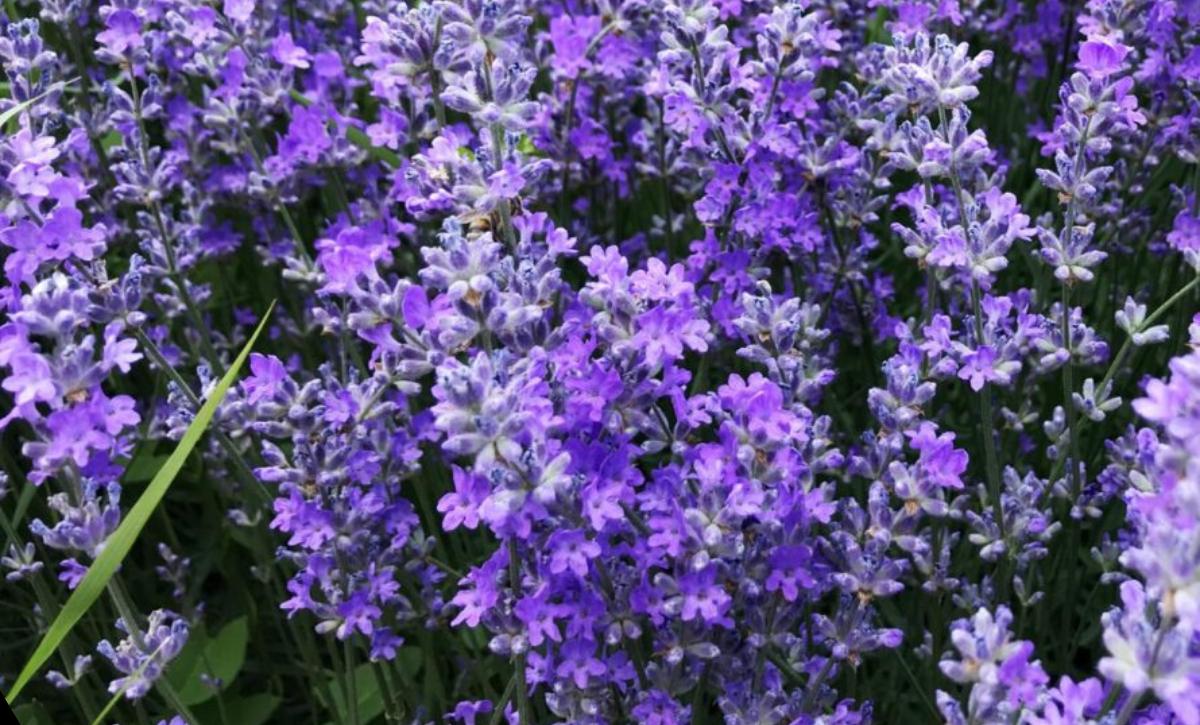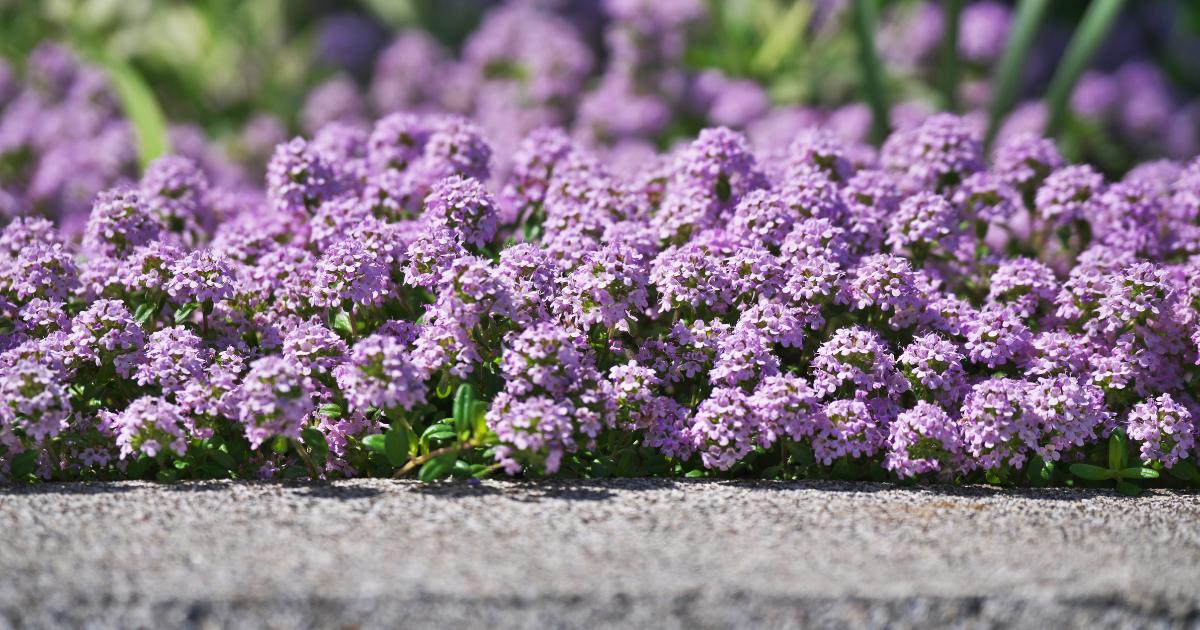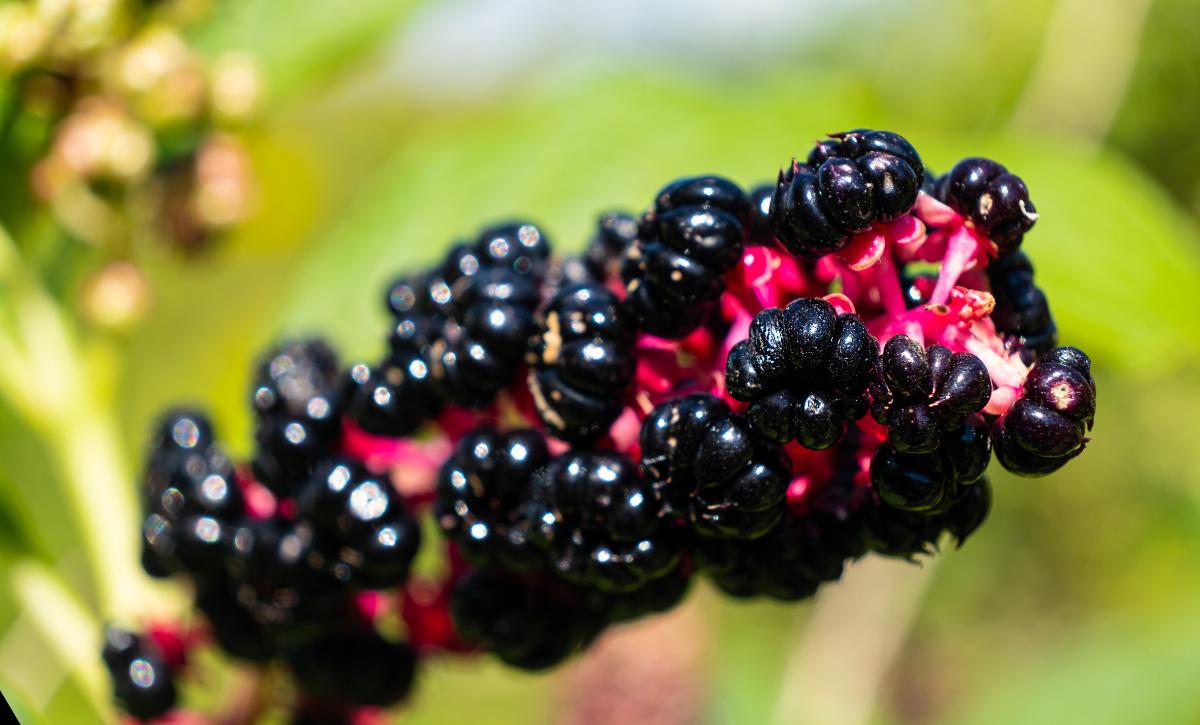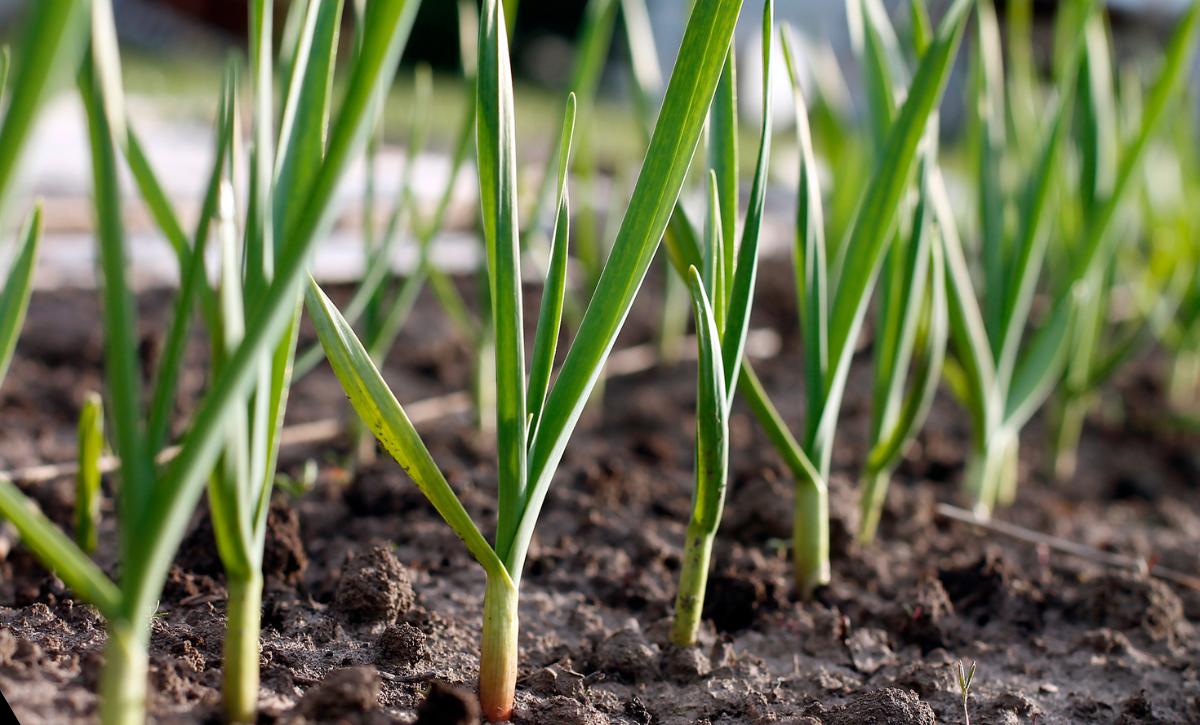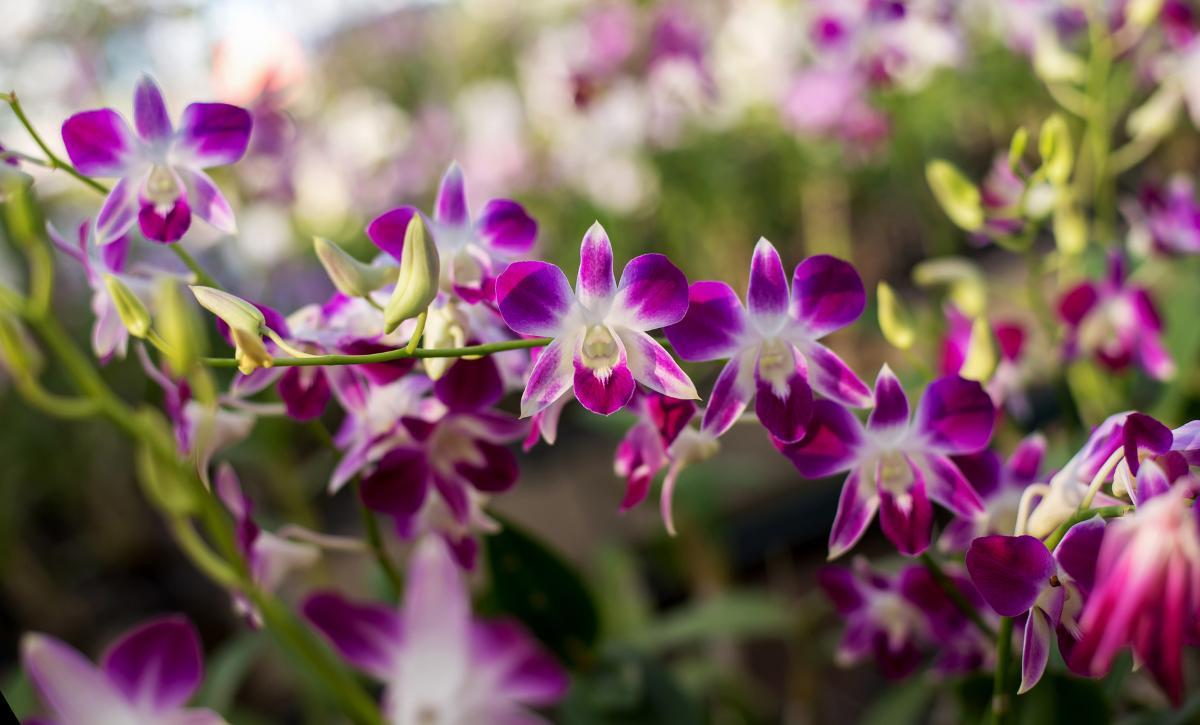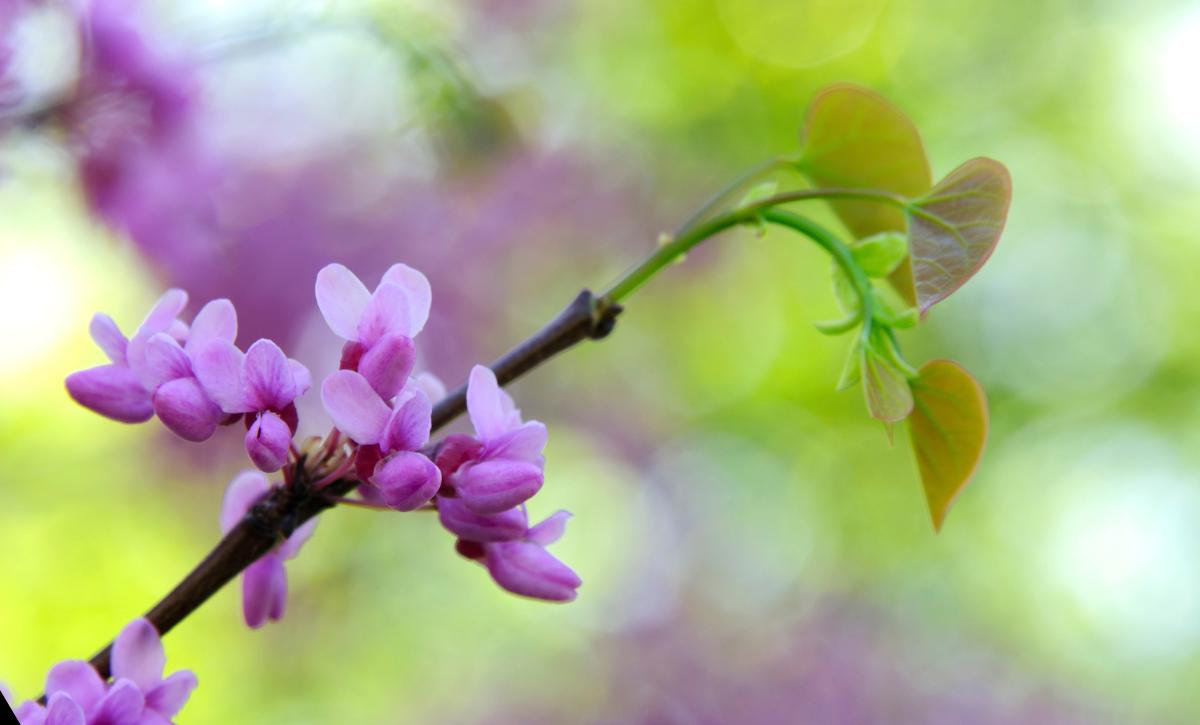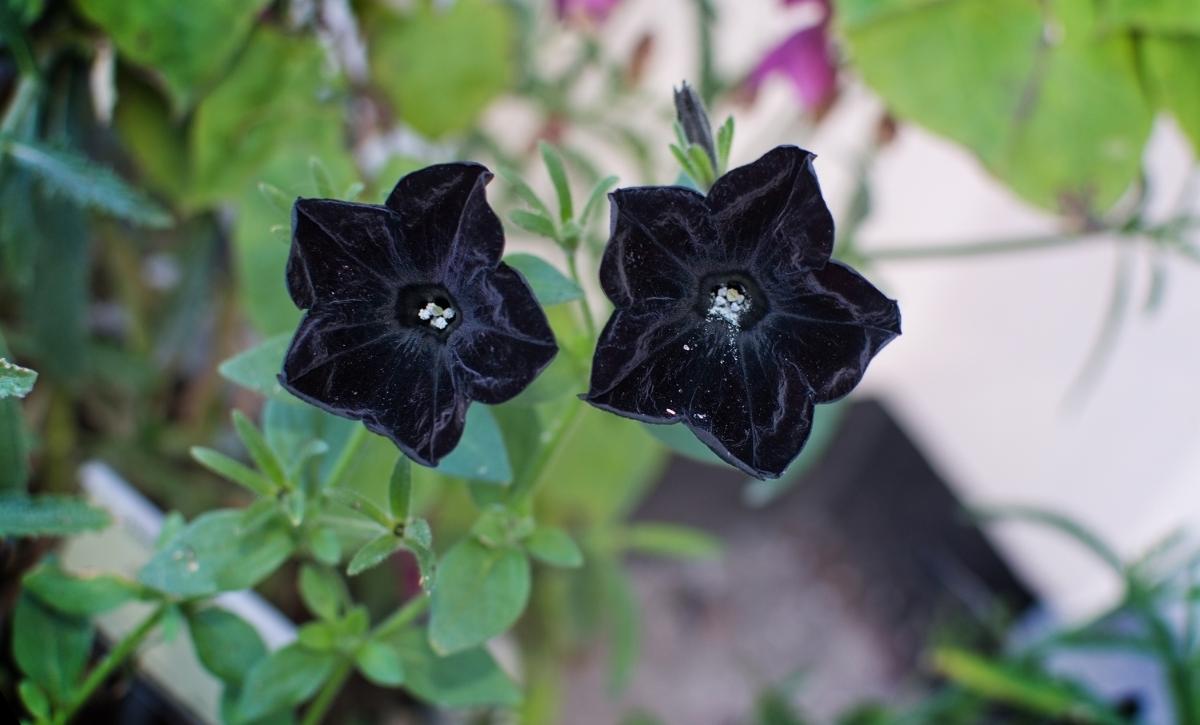A garden can brighten up any outdoor space, especially if you add some flowering plants. However, most gardeners complain about the lack of plants that can spruce up a shaded area in a garden.
By definition, shade-loving plants are plants that can survive with less than four hours of direct sunlight per day. While several plants fall into this category, most are foliage plants, not flowering ones.
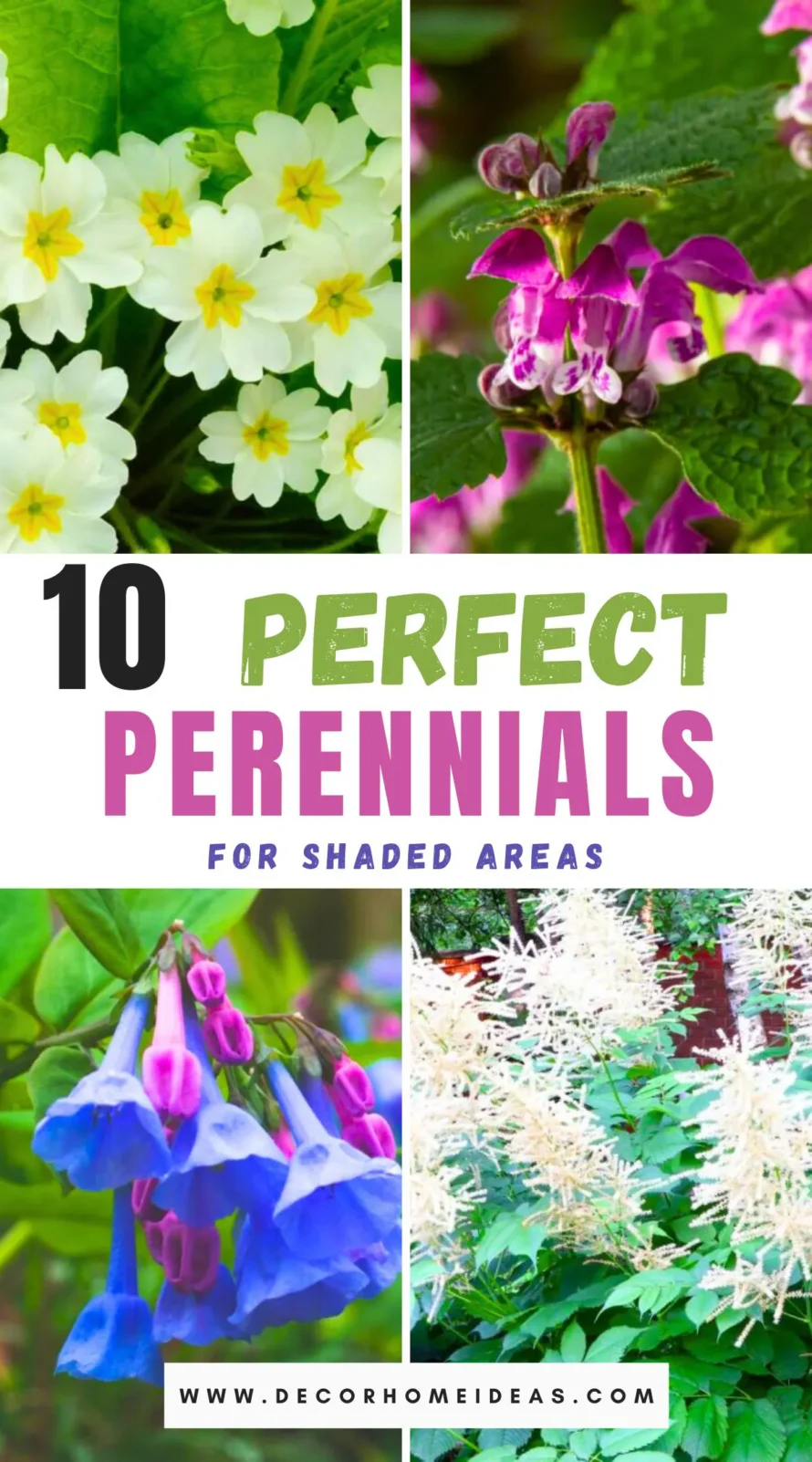
Several flowering perennials can thrive in shady areas. These plants can adapt to a wide range of sunlight exposure, from partial shade to full shade. Even though some of the plants in this category can tolerate full sun, they’ll thrive better in partial shade, especially in hot climates.
Here are ten flowering perennials that you can use to brighten up any shaded spot in your garden.
Take a look!
1. Columbine
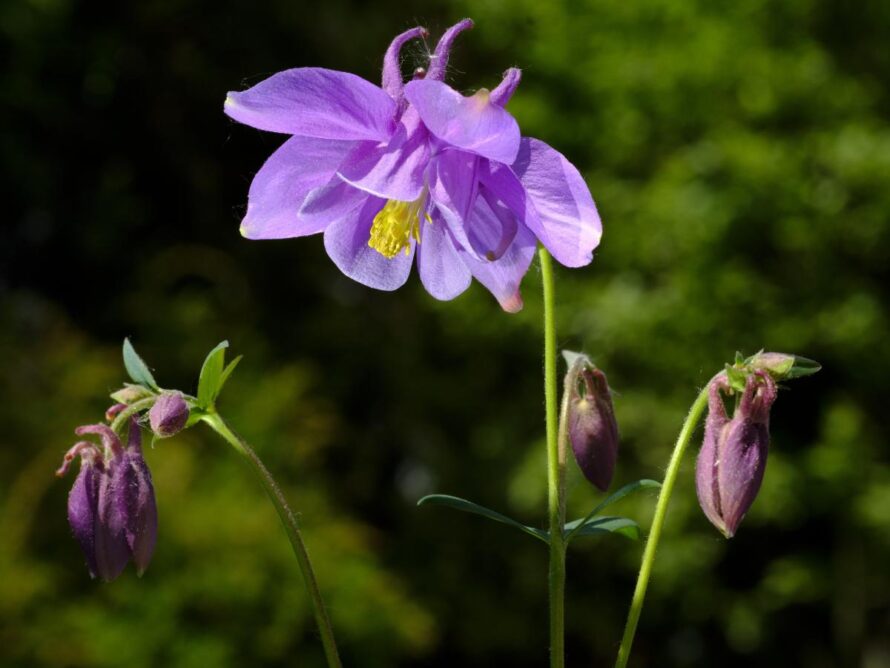
| Scientific name: | Aquilegia spp. |
| Color varieties: | Purple, yellow, red, white, purple, pink, bicolors |
| Soil requirements: | Average, medium moisture, well-drained |
| Sun exposure: | Full sun to part shade |
| USDA hardiness zones: | 3 – 8 |
Columbine is a flowering shrub with beautiful blue bell-shaped blossoms that are a major attraction for butterflies and hummingbirds. This plant will not only spruce up your garden but also attract pollinators that can be useful for other plants.
While there are various native species, most of the common commercially available plants are cultivars of the Aquilegia vulgaris. Even though blue is the most common color, there are a variety of flower color combinations.
Columbines are easy to grow and propagate since they often spread by self-seeding. Blooming time is usually in late spring and early summer, and the plant grows to about two feet tall. Leaf miners are one pest that columbines are susceptible to, but you can cut the foliage to control them.
2. False Spirea
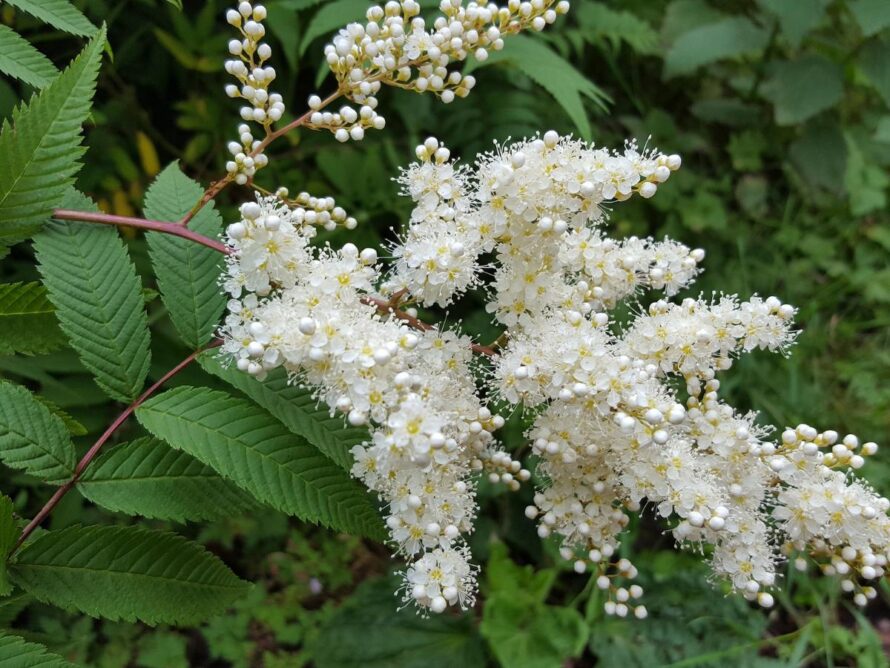
| Scientific name: | Astilbe spp. |
| Color varieties: | Pink, red, white, purple |
| Soil requirements: | Loamy, moist conditions, well-drained |
| Sun exposure: | Full sun to part shade |
| USDA hardiness zones: | 3 – 8 |
Astilbe, also known as false spirea, has flowers in shades of pink, red, purple, and white that bloom in late spring and early summer. Just like the colors, this plant has several varieties, some growing as small as six inches high and others as high as five feet.
False spirea thrives in partial shade but can tolerate full shade or full sun exposure. They require frequent fertilization since they’re heavy feeders and do best in moist conditions. Other than dividing the plants after every three years, these plants require little maintenance effort.
3. Woodland Phlox
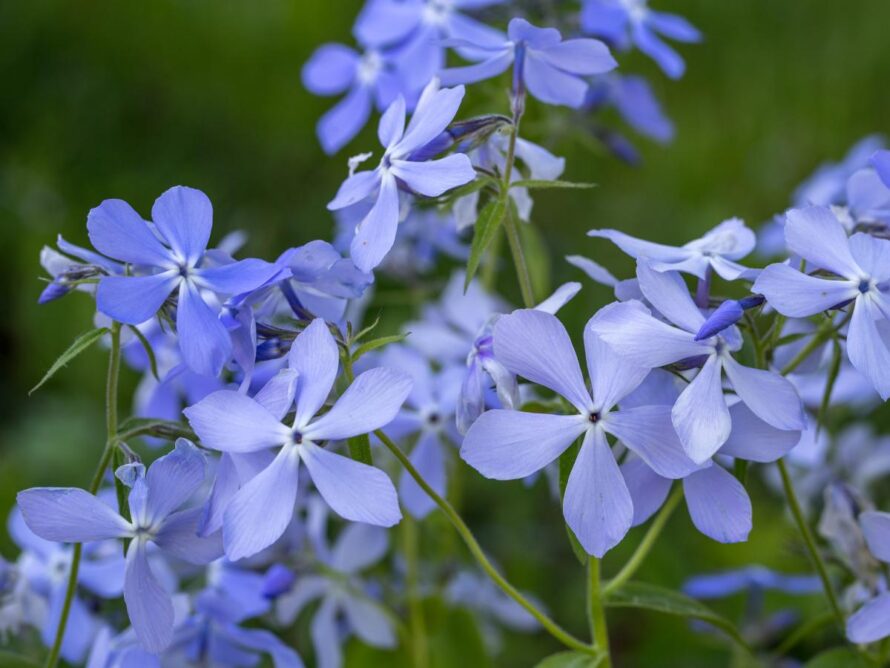
| Scientific name: | Phlox divaricata |
| Color varieties: | Blue, white |
| Soil requirements: | Average, well-drained soil |
| Sun exposure: | Part shade |
| USDA hardiness zones: | 3 – 8 |
Woodland phlox is a flowering ground cover that thrives in dappled shade.
Although many varieties of phlox can tolerate shade, the woodland phlox native to North America is one of the most common varieties that you can easily grow.
The plant has rounded medium green leaves with tall stalks that produce blue or white flowers with five petals.
4. Barrenwort
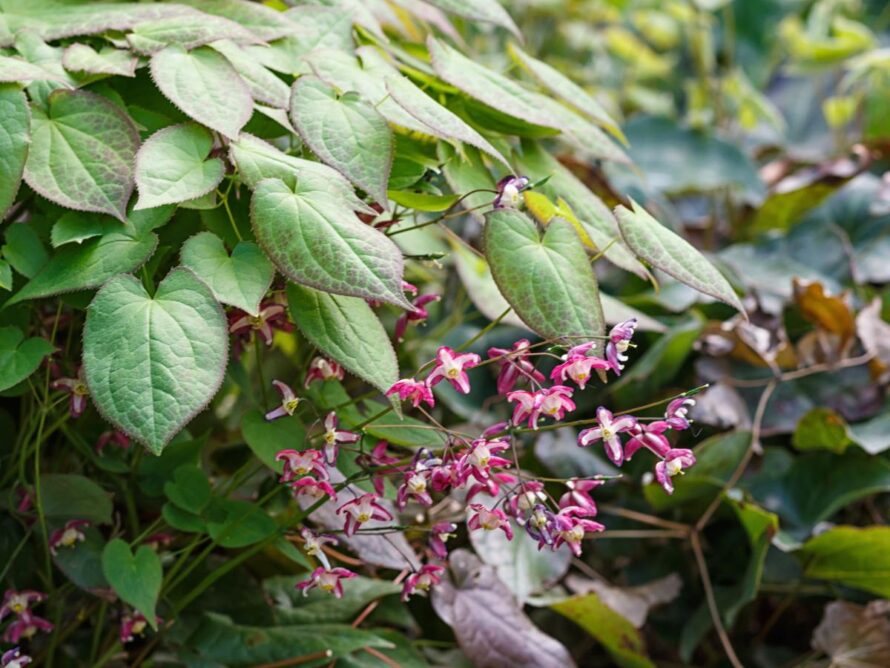
| Scientific name: | Epimedium spp. |
| Color varieties: | Orange, pink, white, yellow, blue, purple |
| Soil requirements: | Loamy, moist, well-drained |
| Sun exposure: | Part shade to full shade |
| USDA hardiness zones: | 4 – 8 |
Most gardeners dismiss this ground cover for fear of it being slow-growing. However, the color and visual interest that the plant adds to your space make it a great addition to any outdoor garden.
It produces bright blue flowers that bloom in early spring. Its foliage also emerges in spring in shades of gold and red and matures to a deep green. Although this plant tolerates full shade, it thrives best in partial shade.
5. Primrose
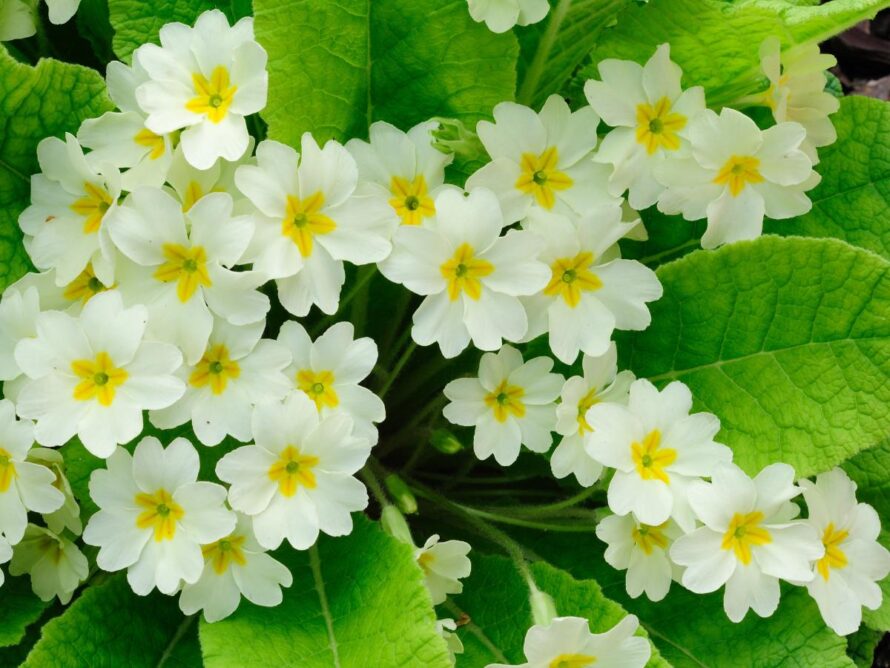
| Scientific name: | Primula spp. |
| Color varieties: | All colors except green |
| Soil requirements: | Rich, moist, well-drained |
| Sun exposure: | Part shade to full shade |
| USDA hardiness zones: | 3 – 8 |
Primroses are one of the earliest blooming flowers in spring and one of the brightest shade-loving flowers to grow. The name primrose comes from the term primula, which means “little first one” in Latin. This is in reference to its blooming season.
Besides being shade-loving, these plants can also survive in full sun in early spring. However, as the temperature rises, you need to move the plants to partial shade.
Various cultivars are available, many of which are grown as annuals since they are adversely affected and may succumb to warm weather.
6. Siberian Bugloss
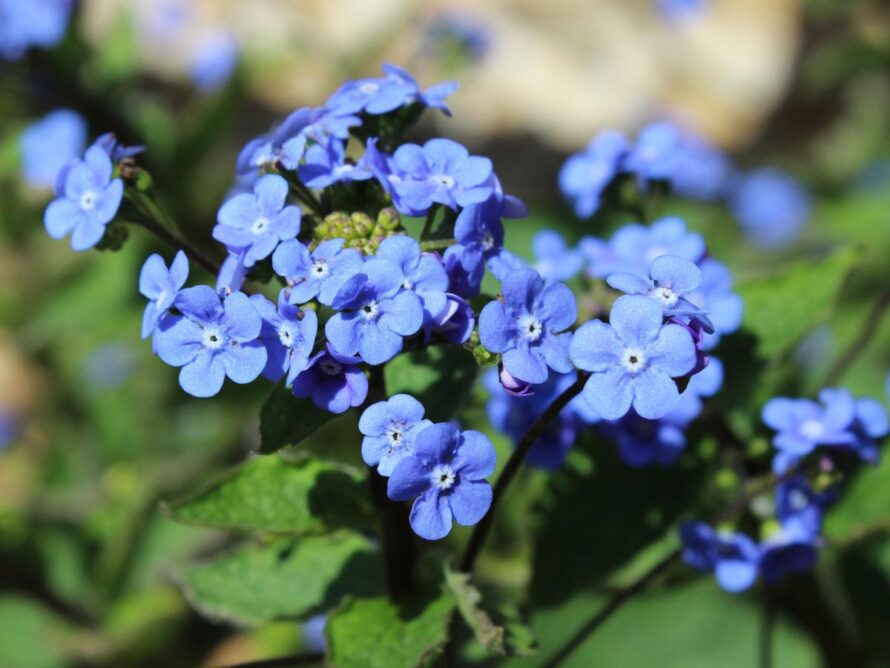
| Scientific name: | Brunnera macrophylla |
| Color varieties: | Blue |
| Soil requirements: | Average, consistently moist, well-drained |
| Sun exposure: | Partial shade |
| USDA hardiness zones: | 3 – 8 |
This clump-forming perennial flower will brighten the outlook of your shaded space with its beautiful blue color. It grows to a maximum of 18 inches and blooms from April to May.
In addition to the flowers, the plant also has interesting heart-shaped dark green leaves that will add visual interest to your space throughout the growing season.
Grow the Siberian bugloss in a dappled shade since its foliage can easily get scorched in the sun. The flower makes an excellent option for mass plantings.
7. Virginia Bluebells
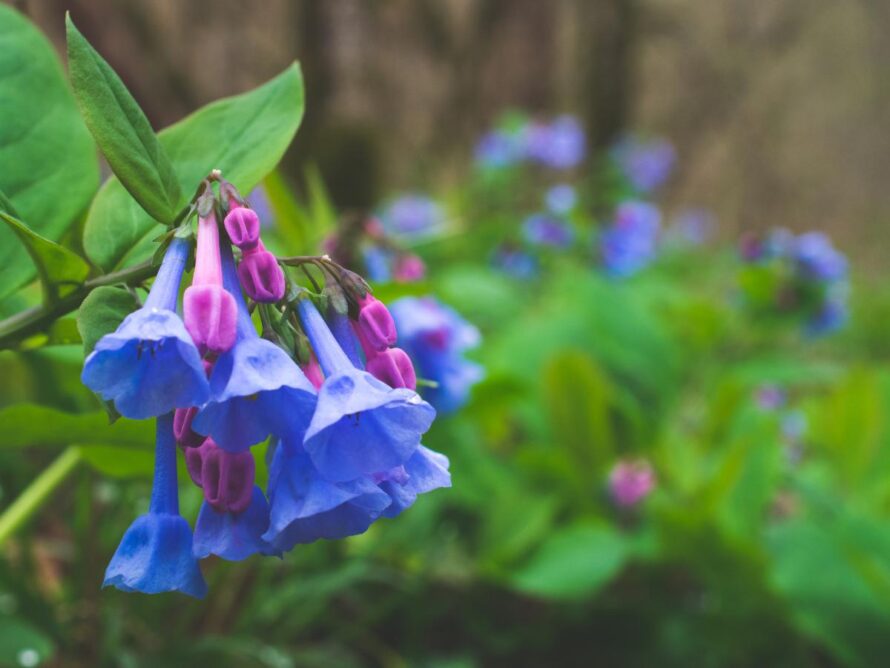
| Scientific name: | Mertensia virginica |
| Color varieties: | Blue |
| Soil requirements: | Moist, nutrient-rich soil |
| Sun exposure: | Full shade |
| USDA hardiness zones: | 3 – 8 |
Native to the Eastern part of the United States, Virginia bluebells are low-maintenance perennials with flowers ranging from pink to clear blue.
Active growth begins in later winter with the appearance of pale green, oval-shaped leaves. Blooming follows shortly after with blue tubular flowers.
This blooming period lasts several weeks before the plant goes completely dormant.
8. Spotted Dead Nettle
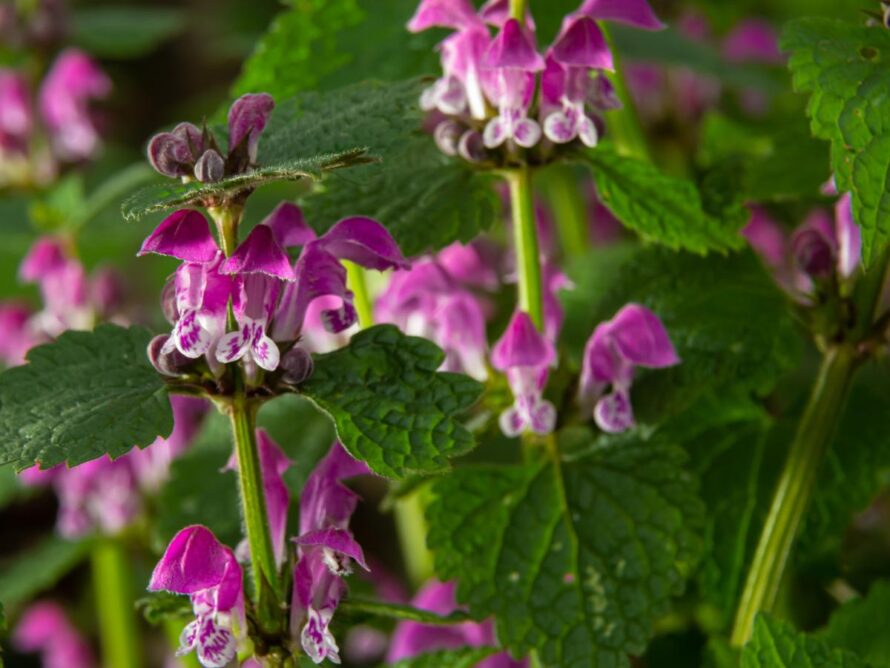
| Scientific name: | Lamium maculatum |
| Color varieties: | White, purple, pink |
| Soil requirements: | Acidic, poor to average |
| Sun exposure: | Shade, part sun |
| USDA hardiness zones: | 4 – 8 |
The spotted dead nettle boasts beautiful pink flowers and spotted silvery leaves that can be the highlight of your garden. This plant is commonly used as a ground cover in areas where other ground covers find it difficult to grow.
Blooming starts in late spring when small pink bell-shaped flowers with spotted lips appear. During fall, the flowers may bloom on and off.
Depending on the growing zones, the leaves can either be evergreen or semi-evergreen, with the latter being for warmer areas. In some states, this plant is considered an invasive species, so ensure you confirm with the relevant office before growing it.
9. Goatsbeard
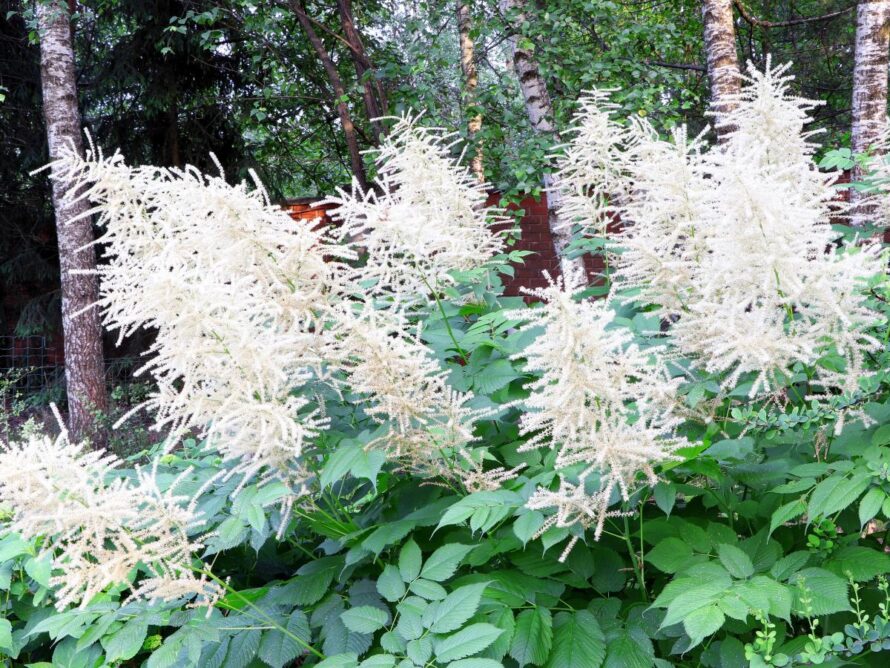
| Scientific name: | Aruncus dioicus |
| Color varieties: | White |
| Soil requirements: | Acidic, alkaline, neutral |
| Sun exposure: | Part shade, part sun |
| USDA hardiness zones: | 4 – 7 |
Looking for a perennial that can add height and lighten up those dark-shaded areas in your garden? Then the goatsbeard is the perfect choice. This plant has a shrublike habit and grows to about four feet wide and six feet tall.
When blooming, the plant produces creamy white flowers, which occur from late spring to early summer.
While this plant may adapt to different soil types and can survive in a shaded area, it may require filtered early morning and late afternoon sun for best flowering results.
10. Hellebore
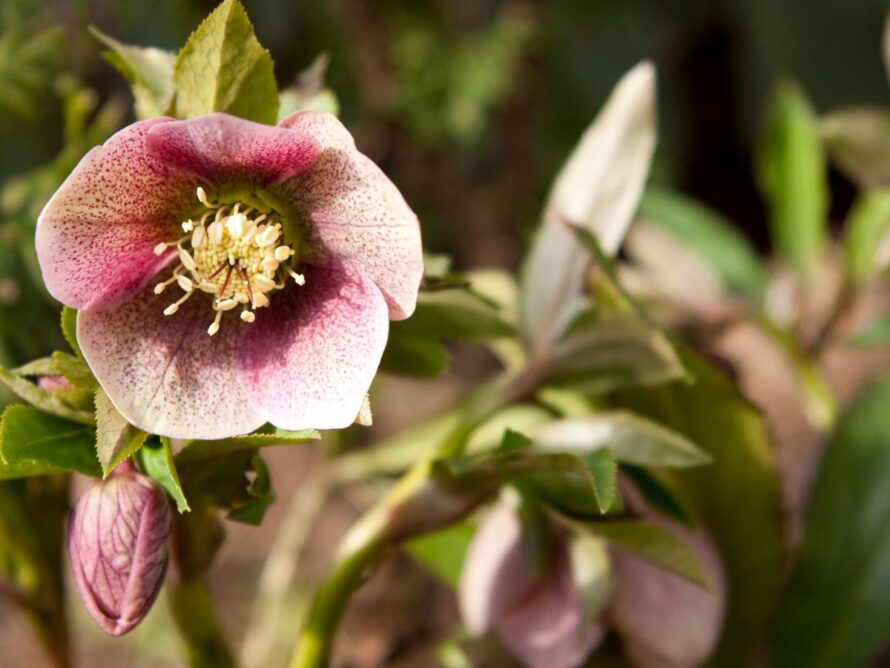
| Scientific name: | Helleborus × hybridus |
| Color varieties: | Cream, white, pink, purple, yellow |
| Soil requirements: | Alkaline, neutral, well-drained |
| Sun exposure: | Shade in summer, sun in winter |
| USDA hardiness zones: | 3 – 9 |
Adding visual interest to your garden may be challenging, especially during winter, but Hellebore may just do the trick. In the southern zones, flowers may appear as early as Christmas. This is why the plant is sometimes referred to as Lenten or Christmas rose.
The Hellebore has dark green foliage with palm-shaped leaves. Its evergreen foliage and clumping habit will add year-round visual interest to your garden.
The Hellebore has a unique sun exposure pattern, preferring shade in summer and sun in winter. As such, it’s an ideal choice to grow under shade. However, be cautious when growing this plant, as it’s wholly toxic to people, pets, and even herbivores.


